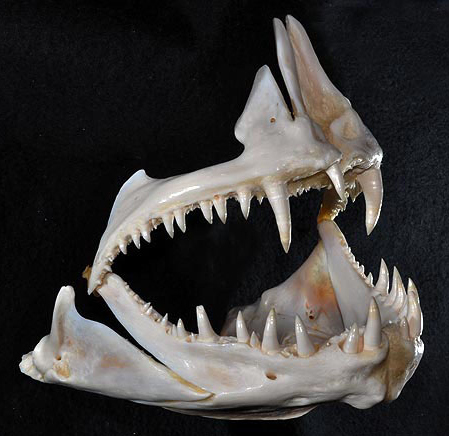|
Archipiélago Jardines De La Reina
Jardines de la Reina () is an archipelago in the southern part of Cuba, in the provinces of Camagüey and Ciego de Ávila. It was named by Christopher Columbus to honour the Queen of Spain, Isabella I of Castile. Since 1996 a marine reserve was established covering a large swath of the archipelago. In 2010, Jardines de la Reina was established as a national park (). With an area of , it is one of Cuba's largest protected areas. Geography It is located in the Caribbean Sea, between the Gulf of Ana Maria (north-west), Gulf of Guacanayabo (south) and Caballones Channel (west). It extends on a general north-west to south-east direction, paralleling the Cuban coast for from Cayo Breton to Cayos Mordazo. Cuba's second largest archipelago (smaller only than Jardines del Rey), it is formed by more than 600 cays and islands. Other cays in the archipelago include Caguamas, Cayos Cinco Balas, Cayo Anclitas, Cayo Algodon Grande, Cayos Pingues and Cayo Granada. Part of the archipelago is also ... [...More Info...] [...Related Items...] OR: [Wikipedia] [Google] [Baidu] |
Cuba
Cuba, officially the Republic of Cuba, is an island country, comprising the island of Cuba (largest island), Isla de la Juventud, and List of islands of Cuba, 4,195 islands, islets and cays surrounding the main island. It is located where the northern Caribbean Sea, Gulf of Mexico, and Atlantic Ocean meet. Cuba is located east of the Yucatán Peninsula (Mexico), south of both Florida and the Bahamas, west of Hispaniola (Haiti/Dominican Republic), and north of Jamaica and the Cayman Islands. Havana is the largest city and capital. Cuba is the List of countries and dependencies by population, third-most populous country in the Caribbean after Haiti and the Dominican Republic, with about 10 million inhabitants. It is the largest country in the Caribbean by area. The territory that is now Cuba was inhabited as early as the 4th millennium BC, with the Guanahatabey and Taino, Taíno peoples inhabiting the area at the time of Spanish colonization of the Americas, Spanish colonization ... [...More Info...] [...Related Items...] OR: [Wikipedia] [Google] [Baidu] |
Cayo Caguamas (sand island)
{{disambiguation ...
Cayo or cayó may refer to: * ''Cayo'' (film), a 2005 Puerto Rican film starring Roselyn Sánchez * Cayo District, a district in the west of the nation of Belize ** San Ignacio, Belize, a town in the Cayo District (originally named "El Cayo") * Caio, Carmarthenshire, a village in Wales sometimes spelt with a 'y' ** Cayo Hundred, a geographic division named after the village * "Cayó", a 2022 song by Arca * Elsa Cayo (born 1951), Peruvian filmmaker See also * Caio (other) * Cay A cay ( ), also spelled caye or key, is a small, low-elevation, sandy island on the surface of a coral reef. Cays occur in tropical environments throughout the Pacific, Atlantic, and Indian oceans, including in the Caribbean and on the Grea ... [...More Info...] [...Related Items...] OR: [Wikipedia] [Google] [Baidu] |
Bonefish
The bonefish (''Albula vulpes'') is the type species of the Bonefishes, bonefish family (Albulidae), the only family in order Albuliformes. Taxonomy Bonefish were once believed to be a single species with a global distribution, however 9 different species have since been identified. There are three identified species in the Atlantic and six in the Pacific. ''Albula vulpes'' is the largest and most widespread of the Atlantic species. Distribution This species inhabits warm subtropical and tropical waters of the western Atlantic, and is found off the coasts of southern Florida, the Gulf of Mexico, and the West Indies. Description The bonefish weighs up to and measures up to long. The color of bonefish can range from very silver sides and slight darker backs to olive green backs that blend to the silver side. Slight shading on the scales often leads to very soft subtle lines that run the flank of the fish from the gills to the tail. The bases of the pectoral fins are someti ... [...More Info...] [...Related Items...] OR: [Wikipedia] [Google] [Baidu] |
Cubera Snapper
The cubera snapper (''Lutjanus cyanopterus''), also known as the Cuban snapper, is a species of marine ray-finned fish, a snapper belonging to the family Lutjanidae. It is native to the western Atlantic Ocean. It is a commercially important species and is a sought-after game fish, though it has been reported to cause ciguatera poisoning. Taxonomy The cubera snapper was first formally described as ''Mesoprion cyanopterus'' in 1828 by the French zoologist Georges Cuvier with the type locality given as Brazil. The specific name is a compound of ''cyano'' meaning "blue" and ''pterus'' which means "fin" as Cuvier described it as having bluish-black membranes on its median fins. Description The cubera snapper has an oval-shaped, rather streamlined, elongate body, which is less deep than many other snapper species. It has a pair of front nostrils and a pair of rear nostrils that are simple holes in its snout. The mouth is relatively large with thick lips. The jaws are equipped with ... [...More Info...] [...Related Items...] OR: [Wikipedia] [Google] [Baidu] |

